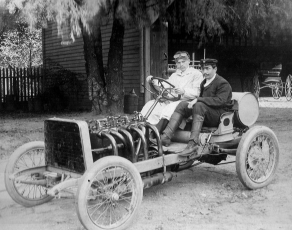
Darracq #18 (1905)
Winner of the 1905 Vanderbilt Cup Race and the 1905 Circuit des Ardennes
Make: Darracq
Year: 1905
Mechanician:
Victor Demogeot
Horsepower: 80
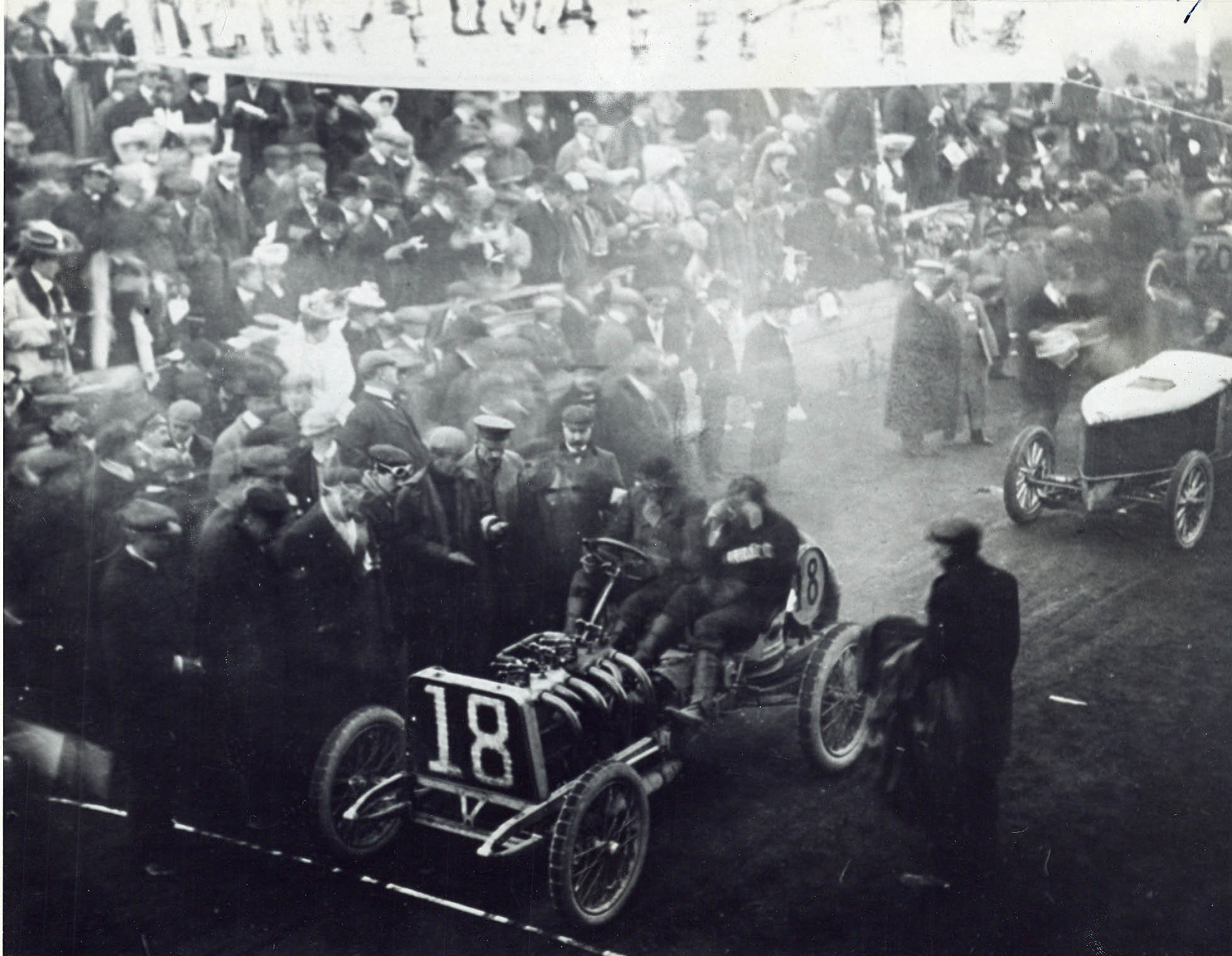 Victor Hemery’s 1905 Vanderbilt Cup Race winning car was one of two Darracqs in a field of 19 machines. At 80 horsepower, the Darracqs had the lowest power of all the European cars entered in the race. Only three American entries had less power.
Victor Hemery’s 1905 Vanderbilt Cup Race winning car was one of two Darracqs in a field of 19 machines. At 80 horsepower, the Darracqs had the lowest power of all the European cars entered in the race. Only three American entries had less power.
Hemery and his teammate Louis Wagner were entered in the only two cars in the race using wire spoke wheels and Dunlop tires. They were also among only four cars to utilize drive shafts to deliver power to the wheels. The rest used chain drive except the American Christie and the White steamer which used direct drive to the front wheels.
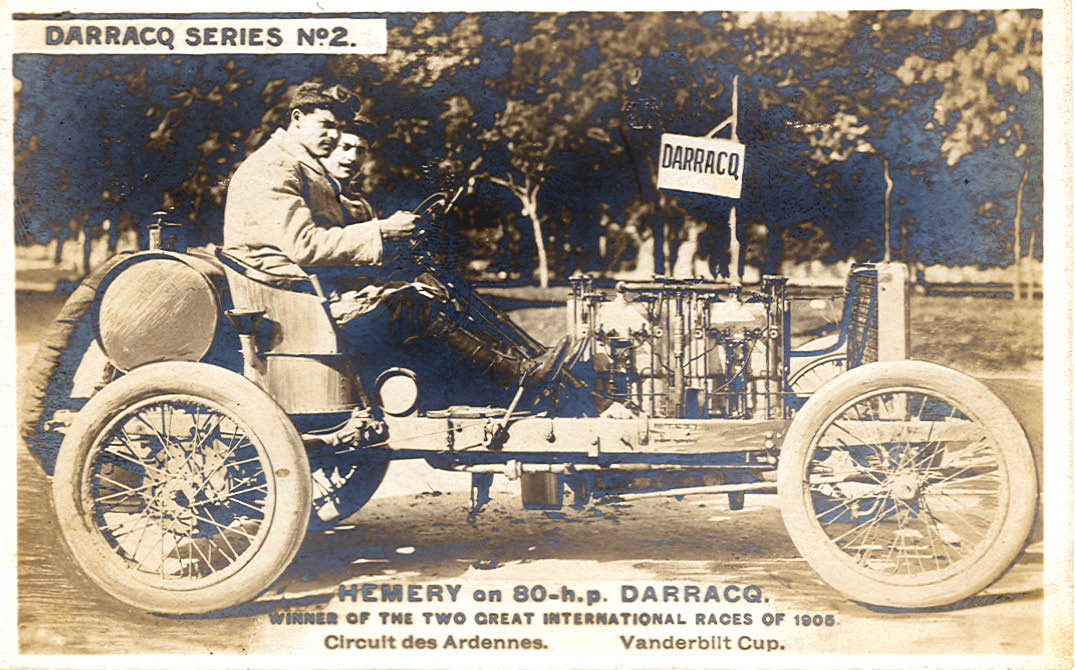 Known as a fierce competitor, Hemery was one of the most highly regarded drivers in the 1905 Vanderbilt Cup Race. Only weeks before the race, he won the prestigious Belgian Circuit des Ardennes in the 80-hp Darracq.
Known as a fierce competitor, Hemery was one of the most highly regarded drivers in the 1905 Vanderbilt Cup Race. Only weeks before the race, he won the prestigious Belgian Circuit des Ardennes in the 80-hp Darracq.
The Darracq’s wheel base was 106 inches or nearly 9 feet. The wheels were 53 inches apart from one end of the axle to the other. The nose of the car was square and the machine sported a barrel-style gas tank behind the its seats.
The Darracqs had four cylinder engines with 6 inches of both stroke and bore. That meant the engine had a total displacement of 678.6 cubic inches. By comparison, the Locomobile, which had the largest engine in the race, checked in at 1,077.6 cubic inches.
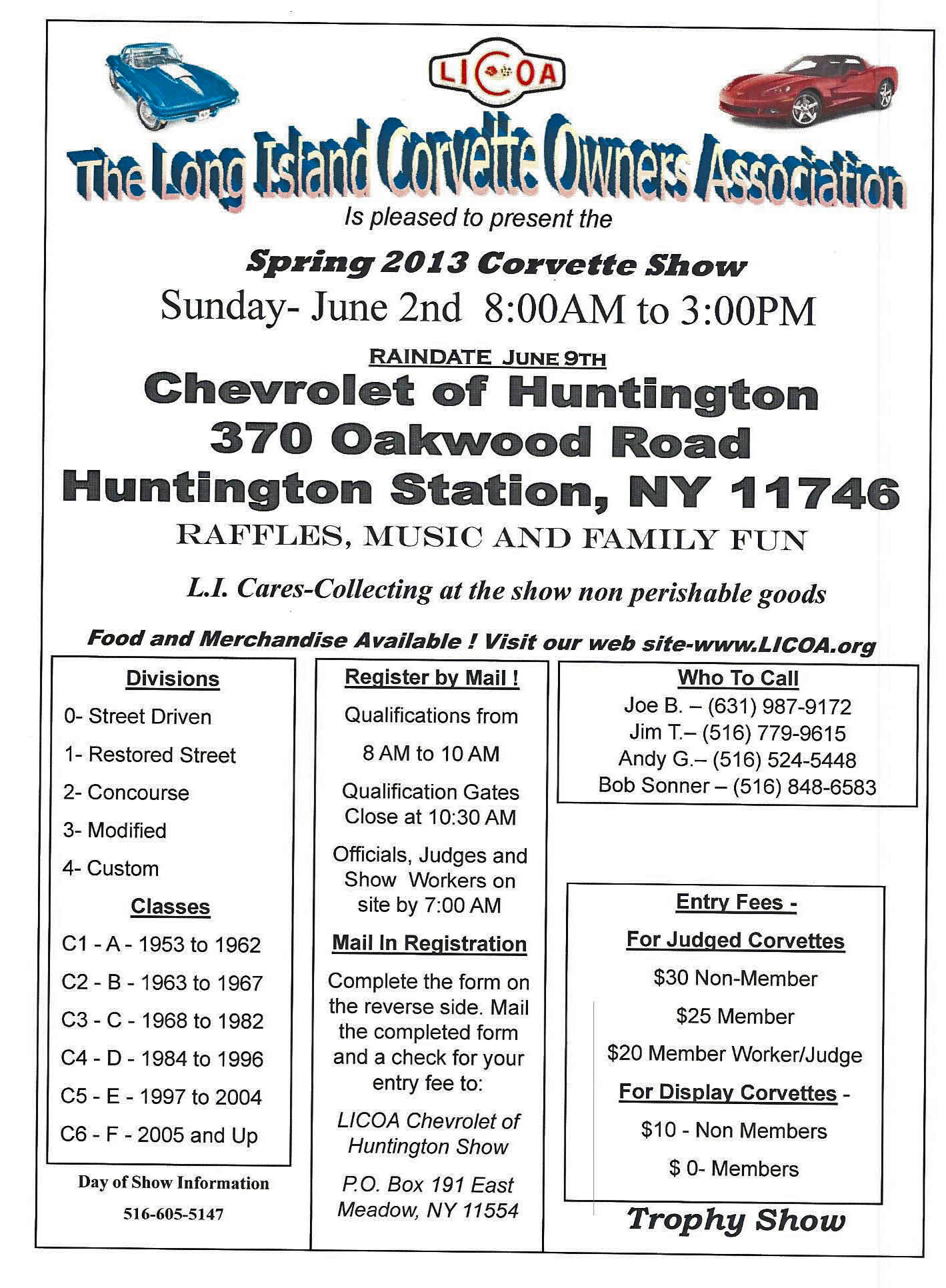 The Darracqs had a four speed transmission with a reverse gear. The smaller engine and wire spoke wheels accounted for both of the team cars being the lightest race entries with Hemery’s weighing 2,060 pounds.
The Darracqs had a four speed transmission with a reverse gear. The smaller engine and wire spoke wheels accounted for both of the team cars being the lightest race entries with Hemery’s weighing 2,060 pounds.
_edited-1.jpg) After the leader Vincenzo Lancia's Fiat collided three laps from the end of the 1905 Vanderbilt Cup Race, Hemery took the lead and won averaging 61.5 mph.
After the leader Vincenzo Lancia's Fiat collided three laps from the end of the 1905 Vanderbilt Cup Race, Hemery took the lead and won averaging 61.5 mph.
The morning after the race the Darracq crew was cleaning the winning car at their headquarters at the Glenwood Hotel in Sea Cliff. They emptied oil and gas on the ground directly beside the machine. Someone in a crowd of onlookers apparently discarded a match after lighting a cigar. The fuel immediately caught fire and quickly traced its way back to the Darracq, which was still coated with flammable oil.
Initial reports indicated the car was destroyed, but this was not the case. Tires, paint, wiring and seat upholstery were the most greatly damaged parts. Witnesses saw the car speeding around the course the following day.
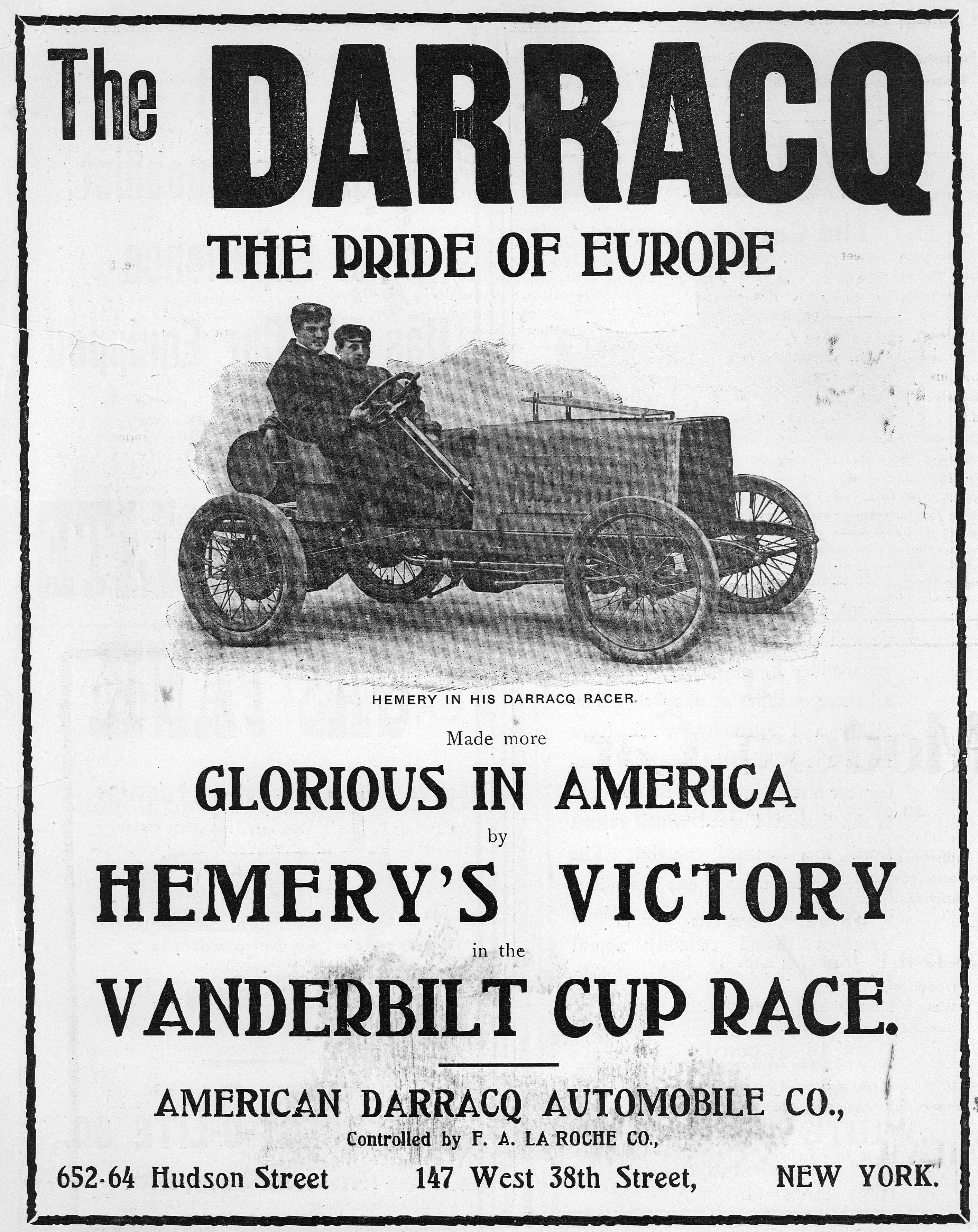 The machine was eventually sold to American barnstorming racer Barney Oldfield, who used it in his traveling troupe that staged races at fairgrounds tracks around the countryside. Oldfield assigned the car to driver Ben Kerscher, who drove it in several events at a major race meet at the Indianapolis Motor Speedway in May 1910.
The machine was eventually sold to American barnstorming racer Barney Oldfield, who used it in his traveling troupe that staged races at fairgrounds tracks around the countryside. Oldfield assigned the car to driver Ben Kerscher, who drove it in several events at a major race meet at the Indianapolis Motor Speedway in May 1910.

Rollin’s granddaughter Betty King had this medal. She said she gave it to the National Inventors Hall of Fame Museum…